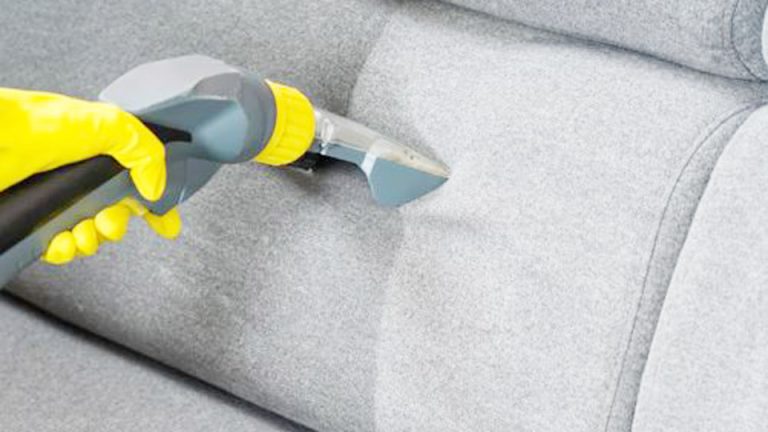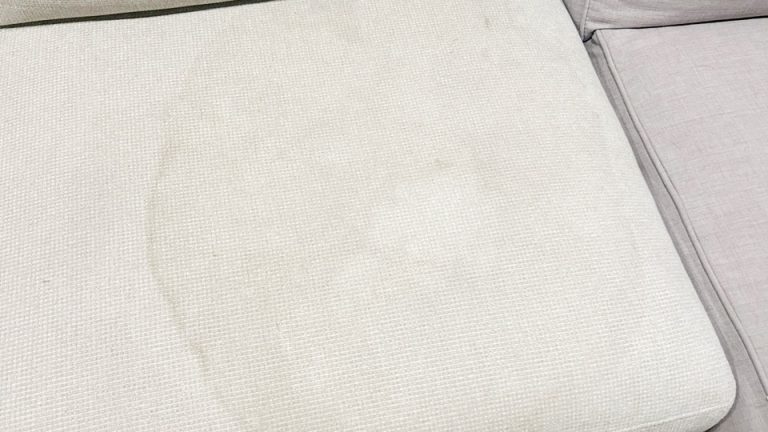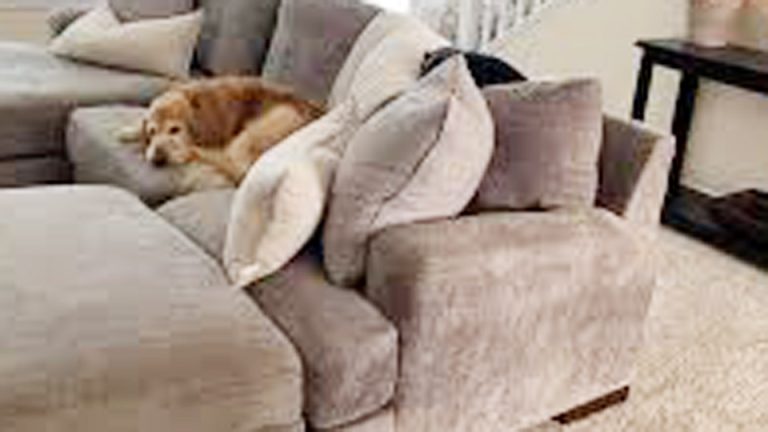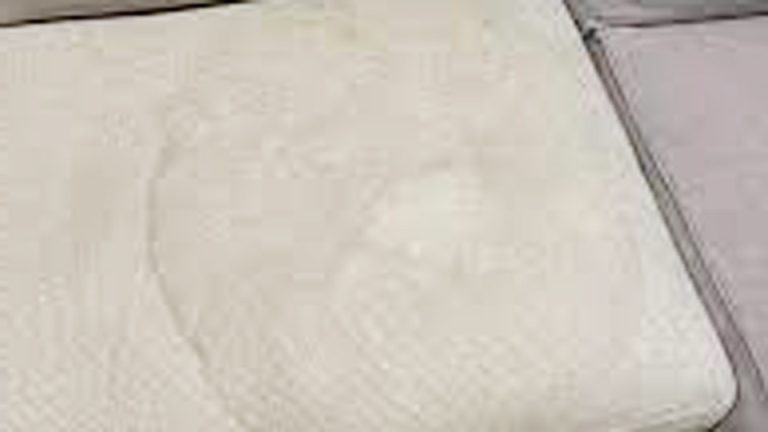As a pet owner and self-proclaimed cleaning enthusiast, I’ve tackled all sorts of messes, but few have tested my skills like figuring out how to get dog pee out of a leather couch. My golden retriever, Max, had a phase during his puppy days where my leather sofa became his accidental target, leaving me scrambling to remove stains and odors without ruining the upholstery.
Leather is tricky—it’s luxurious but delicate, and the wrong cleaner can dry it out or strip its finish. After years of trial and error, I’ve perfected a gentle, effective routine using safe, pet-friendly products that keep my couch looking pristine.
I’ll share my step-by-step methods, personal tips, and real-life stories to help you clean dog urine from your leather couch, If you’re a busy mom or a professional keeping your home spotless.
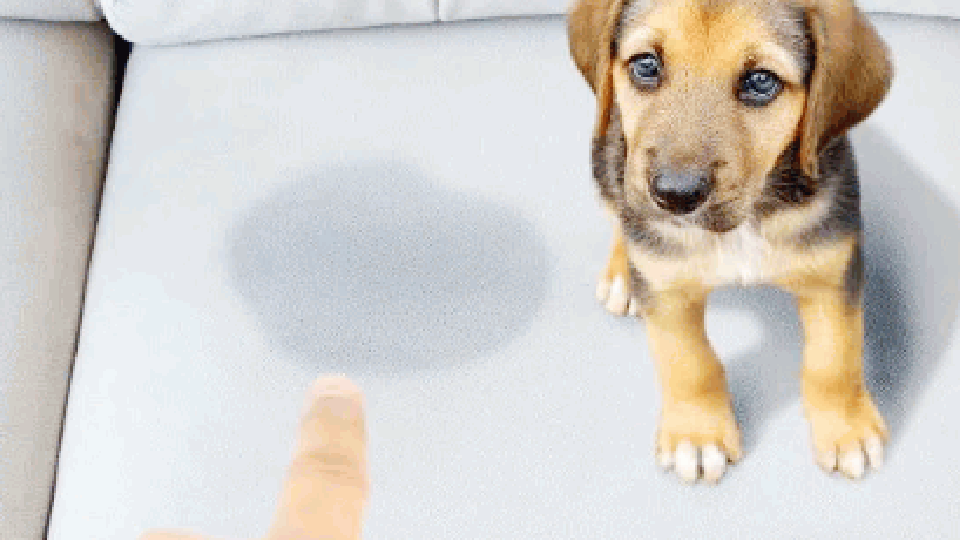
Image by smash
Why Dog Pee on Leather Couches Is a Challenge
Dog urine on a leather couch is a double whammy—it leaves stains and odors that can linger if not cleaned properly, and leather’s sensitive surface demands careful handling. I learned this when Max had an accident on my living room sofa, and my first attempt with a harsh cleaner left a dull spot.
Leather is less porous than fabric, so urine sits on the surface, but it can seep into seams, cracks, or untreated leather, causing discoloration or smells that attract pets back to the spot.
My goal was to find cleaners that remove urine, neutralize odors, and protect the leather’s finish, all while being safe for Max and my family. Gentle solutions like dish soap and enzyme cleaners became my go-to, and I’ll show you how they can work for you too.
Understanding Your Leather Couch
Before we start cleaning, let’s talk about leather. I have a polished leather sofa, which is smooth and shiny but prone to drying out if mishandled. There are different types of leather—full-grain, top-grain, bonded, or faux—and each reacts differently to cleaners.
Polished or sealed leather, like mine, resists liquids better, while raw or aniline leather is more absorbent and delicate.
I learned this when I used a too-strong cleaner on a leather ottoman and noticed cracking. Check your couch’s care tag (often under cushions) or test cleaners in a hidden spot, like behind a cushion, to avoid damage. Knowing your leather type helps you choose the right cleaning method.
Gathering Your Cleaning Supplies
To clean dog urine from a leather couch, I use gentle, leather-safe tools and cleaners. I keep these in my cleaning caddy for quick access when Max strikes. Here’s what I use:
- Mild liquid dish soap: Cuts through urine residue without harming leather.
- Enzyme-based pet cleaner: Breaks down urine proteins and odors.
- Warm water: Dilutes cleaners for safe application.
- Microfiber cloths or soft rags: For gentle wiping and blotting.
- Paper towels: To absorb fresh urine quickly.
- Soft-bristle brush or old toothbrush: For cleaning seams or textured leather.
- Leather conditioner: Restores moisture and protects the finish.
- Dry towels: To absorb excess moisture.
- Fan or hairdryer (cool setting): To speed drying and prevent mold.
- Protective gloves: To keep hands clean and safe from bacteria.
- Black light (optional): To find hidden urine spots.
These items are affordable, pet-safe, and easy to find, making urine cleanup manageable and effective.
Step-by-Step Guide to Cleaning Fresh Dog Urine from a Leather Couch
When Max was a puppy, fresh urine accidents on my leather sofa were a regular headache. This gentle dish soap method saved my couch without damaging the leather. Here’s how I do it:
Blot the Urine Immediately
As soon as I spot a puddle, I grab paper towels to blot up as much urine as possible. I press gently to absorb liquid from the leather surface and seams, working from the outside in to avoid spreading. I learned to act fast after Max peed on my sofa, and delaying let the urine seep into the stitching, making it harder to clean.
Mix a Gentle Cleaning Solution
In a small bowl, I mix 1 cup warm water with a drop of mild liquid dish soap. I avoid acidic cleaners like vinegar or baking soda, which can dry out or discolor leather, as I discovered when I dulled a leather cushion. I stir gently to create a light foam.
Test a Hidden Area
I always test the solution on a hidden spot, like under a cushion, to ensure it won’t harm the leather. I dab a small amount with a microfiber cloth, wipe, and check for discoloration. This saved my sofa when I realized a stronger soap stripped the finish slightly.
Wipe the Urine Spot
I dip a microfiber cloth in the soapy solution, wring it out well, and gently wipe the urine spot. I work in small, circular motions to lift residue, focusing on seams where urine hides. I avoid over-wetting, as too much moisture can damage leather. This removed a fresh urine stain from my sofa in minutes.
Rinse the Area
I wipe the area with a clean, damp microfiber cloth to remove soap residue. I rinse the cloth often to avoid spreading urine. I keep wiping until no soap remains, ensuring the leather isn’t sticky.
Dry Thoroughly
I dry the leather with a clean towel, pressing gently to absorb moisture. I use a fan or hairdryer on a cool setting to ensure the area is completely dry, preventing mold or watermarks. This step kept my sofa odor-free after Max’s accident.
Condition the Leather
I apply a leather conditioner with a soft cloth, following the product’s instructions, to restore moisture and protect the finish. This step is crucial, as cleaning can dry out leather, and it kept my sofa soft and shiny.
Tackling Set-In Urine Stains on a Leather Couch
For older, set-in stains, like the ones I found on a leather armchair after Max marked it during house training, I use an enzyme cleaner. Here’s my method:
Locate the Stain
I use a black light to find dried urine spots, which glow under the light. This helped me spot a hidden stain on my armchair’s armrest that was causing a faint odor.
Apply an Enzyme Cleaner
I choose a pet-safe enzyme cleaner designed for leather, ensuring it’s pH-neutral to avoid damage. I spray it lightly on the stained area, focusing on seams, and let it sit for 15-30 minutes, depending on the product’s instructions. This broke down a set-in stain on my armchair.
Wipe and Rinse
I wipe the area with a damp microfiber cloth to remove the cleaner and urine residue. I rinse the cloth often and wipe with plain water to ensure no residue remains. I dry thoroughly with a towel and fan.
Condition the Leather
I apply a leather conditioner to restore moisture and prevent cracking. This step restored my armchair’s luster after cleaning a stubborn stain.
Tips for Success
I use enzyme cleaners sparingly and test first to avoid discoloration. I also avoid scrubbing too hard, as leather is delicate and can scratch.
Cleaning Urine from Textured or Suede Leather
For textured or suede leather, like my suede accent chair, I use a modified approach to avoid damage:
Blot Immediately
I blot fresh urine with paper towels, pressing gently to avoid pushing liquid deeper into the texture. I act fast to prevent stains.
Use a Dry Brush
I gently brush the area with a soft-bristle brush to lift dried urine residue before cleaning. This helped on my suede chair where urine had dried.
Apply Enzyme Cleaner
I spray a leather-safe enzyme cleaner lightly, letting it sit for 15 minutes. I avoid soap solutions, as they can mat suede fibers. I blot with a microfiber cloth, then dry with a fan.
Restore Texture
I brush the suede gently with a suede brush to restore its nap after drying. I skip conditioner, as suede doesn’t need it, but I ensure the area is completely dry.
Comparing Cleaning Methods for Dog Urine on Leather
I’ve tried various methods to find the best way to remove dog urine from a leather couch, and each has its strengths. Here’s a table comparing my top approaches:
| Method | Ingredients/Tools | Pros | Cons | Best For |
|---|---|---|---|---|
| Dish Soap Solution | Dish soap, water, microfiber cloth | Gentle, leather-safe, affordable, removes fresh urine | Less effective on set-in stains or odors | Fresh urine, polished leather |
| Enzyme Cleaner | Pet-safe enzyme spray | Breaks down odors, prevents re-marking, leather-safe | More expensive, needs longer sit time | Set-in stains, persistent odors |
| Dry Brushing | Soft-bristle brush, microfiber cloth | No moisture, safe for suede or delicate leather | Doesn’t remove odors, only surface residue | Textured or suede leather |
| Water Wipe | Water, microfiber cloth | Safest for leather, quick for small messes | Ineffective for stains or odors | Very fresh urine, light cleaning |
The dish soap method is my go-to for fresh messes, while enzyme cleaners are best for stubborn odors.
Leather-Specific Cleaning Tips
Different leather types need tailored care. Here’s how I adjust my approach:
Polished Leather
My sofa’s polished leather handles mild dish soap well. I clean weekly for maintenance and condition monthly to keep it soft.
Suede or Nubuck Leather
My suede chair needs dry brushing and enzyme cleaners to avoid matting. I avoid water-based solutions and brush to restore texture.
Aniline or Raw Leather
For untreated leather, I use only enzyme cleaners and minimal water, as it’s highly absorbent. I test thoroughly to avoid stains.
Seams and Stitching
Urine often hides in seams, so I use a toothbrush with enzyme cleaner to clean these areas, followed by thorough drying.
Preventing Dog Urine on Leather Couches
Keeping my leather couch urine-free is easier with preventative habits. Here’s what I do:
Clean Up Immediately
I blot urine right away with paper towels to prevent it from seeping into seams. This saved my sofa from Max’s accidents.
Use Protective Throws
I use washable throws on my sofa during Max’s training phase. They’re easy to clean and protect the leather.
Train Your Pet
I worked with Max on consistent potty training, rewarding him for going outside. This reduced accidents significantly.
Regular Maintenance
I wipe my sofa weekly with a damp cloth and condition monthly to keep the leather resistant to liquids and stains.
Extra Cleaning Hacks I Love
Here are some tricks I’ve picked up to make cleaning easier:
Black Light for Hidden Stains: I use a black light to find dried urine spots that glow, like on my sofa’s armrest where Max sneaked a pee.
Microfiber Mitts: I use microfiber cleaning mitts for quick wiping of small urine spots, making cleanup faster.
Conditioner Buff: I buff leather with a soft cloth after conditioning to enhance shine and protect against future messes.
You’re Ready to Keep Your Leather Couch Spotless!
Mastering how to get dog pee out of a leather couch has been a game-changer for my home, and I’m thrilled to share my methods with you. With gentle solutions like dish soap and enzyme cleaners, you can keep your leather couch clean, odor-free, and pet-friendly, even with a mischievous pup like Max.
My step-by-step guide and tips make it easy to tackle messes, no matter how busy life gets. Your couch deserves to shine, and you’ve got the tools to make it happen.
Frequently Asked Questions
Can I use vinegar to clean dog urine from a leather couch?
I avoid vinegar on leather because it can dry out or discolor the finish. I stick to mild dish soap or enzyme cleaners for safe cleaning.
How long does it take to clean dog urine from a leather couch?
For fresh urine, my dish soap method takes about 20 minutes, including drying. Set-in stains with enzyme cleaners may need 30-45 minutes.
Will these cleaners remove urine odors completely?
Yes, my enzyme cleaner method eliminates odors by breaking down urine proteins. It stopped Max from re-marking my sofa.
What if the urine stain doesn’t come out after cleaning?
If stains persist, I reapply an enzyme cleaner and let it sit longer, up to 30 minutes. I also check seams with a black light for hidden spots.
Are these cleaners safe for homes with pets or kids?
Yes, my methods are pet-safe and non-toxic when used properly. I rinse thoroughly and dry completely to avoid residue that pets or kids might touch.

